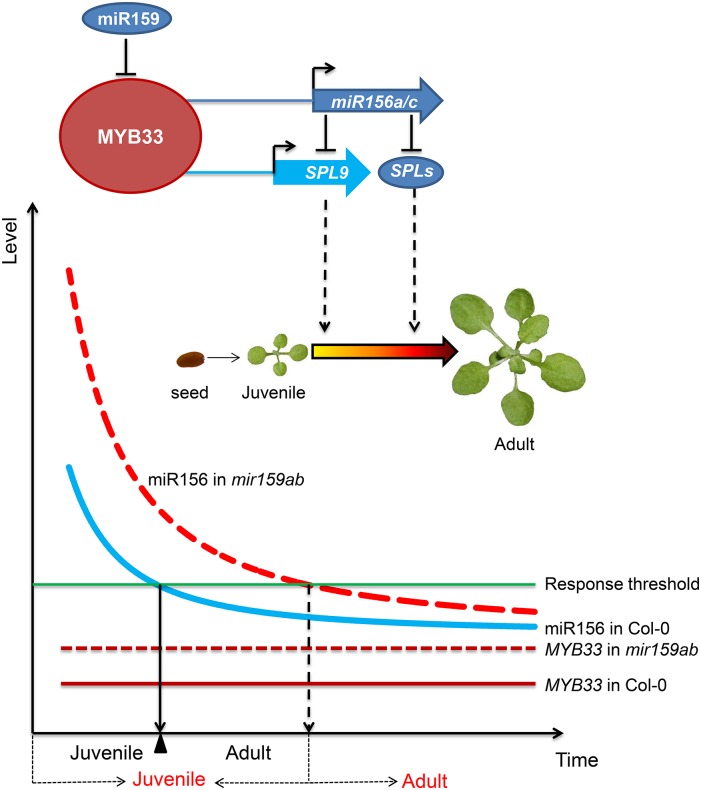Figure 5.
A Model for the Repression of miR156 by miR159 to Control the Correct Timing of Juvenile-to-Adult Transition in Arabidopsis.
MYB33, a target of miR159, serves as an activator of miR156a and miR156c as well as SPL9 to regulate vegetative phase change in Arabidopsis. In the myb33 mutant, reduction in miR156 causes elevated levels of SPL9; in the meantime, the direct transcriptional activation of SPL9 by MYB33 is also compromised. The reduced level of miR156 increases the abundance of the endogenous SPL9 transcript, thus compensating for the effect of myb33 on SPL9 transcription. In the wild type, miR159 does not completely repress MYB33 activity during vegetative development but sets a threshold for its expression. MYB33 (solid red line) also creates a threshold level of miR156 (solid blue curve) for plants to ensure that vegetative phase change is initiated at the right time. In the mir159ab double mutant, due to the absence of miR159 regulation, MYB33 (dotted red line) is derepressed, and it is highly and ectopically expressed in incorrect cells and tissues to activate the expression of miR156 (dotted red curve) to delay vegetative phase change. x axis: time from juvenile to adult. Black letters under the x axis indicate time from juvenile to adult in the wild type, and red letters indicate time from juvenile to adult in miR159ab mutant. y axis, miR156 and MYB33 expression level.

